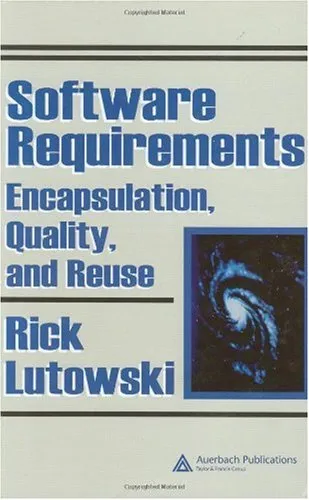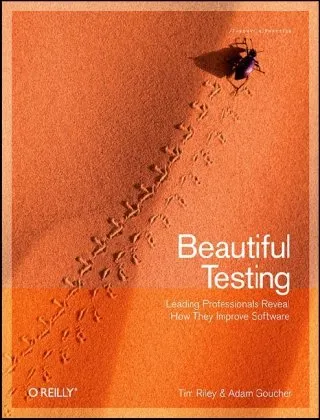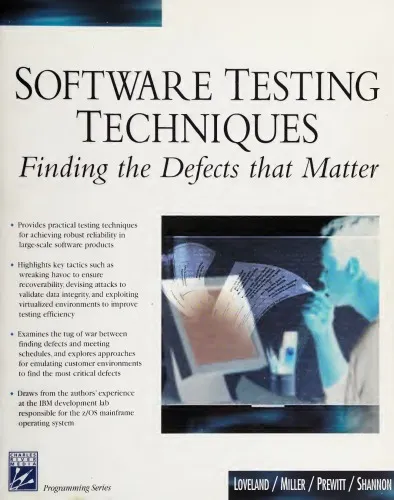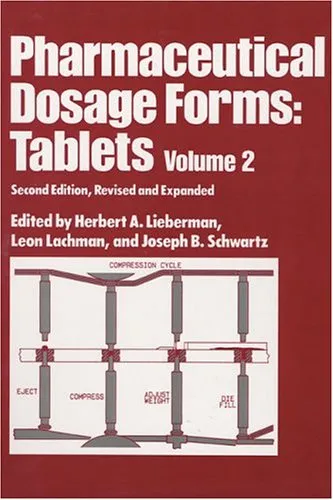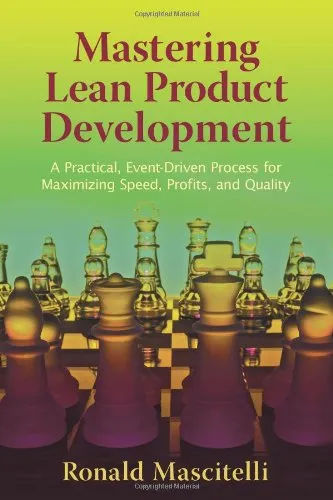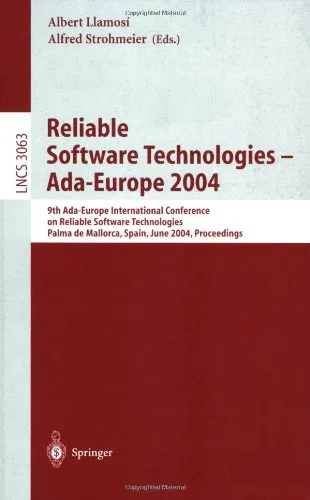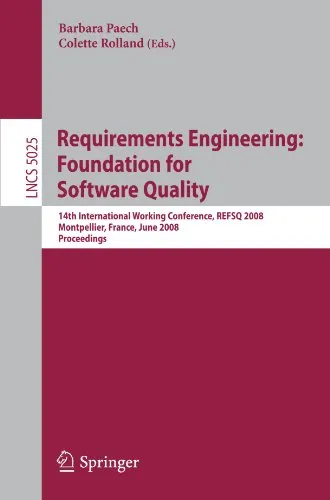Software Requirements: Encapsulation, Quality, And Reuse
3.8
Reviews from our users

You Can Ask your questions from this book's AI after Login
Each download or ask from book AI costs 2 points. To earn more free points, please visit the Points Guide Page and complete some valuable actions.Related Refrences:
Introduction to Software Requirements: Encapsulation, Quality, And Reuse
In the ever-evolving landscape of software development, where expectations around quality, adaptability, and innovation are growing exponentially, software requirements stand as the cornerstone of successful projects. Software Requirements: Encapsulation, Quality, And Reuse serves as a definitive guide for software engineers, project managers, business analysts, and all stakeholders involved in the development lifecycle. This book delves deeply into the fundamental aspects of defining, analyzing, and managing software requirements with an emphasis on encapsulation, ensuring quality, and promoting reusability. It equips readers with the theoretical knowledge and practical insights necessary to bridge gaps, avoid costly mistakes, and deliver value-driven results.
The book aims to introduce readers to a paradigm where software requirements are not just static lists of features but dynamic assets that require proper structuring and reusability across projects. This approach revolutionizes how teams approach development, saving time and resources without compromising on quality.
Whether you're a seasoned professional looking to refine your skills or a newcomer eager for a comprehensive understanding, this book is structured to provide practical frameworks and actionable strategies that will reshape your perspective on requirements management.
Detailed Summary of the Book
Software Requirements: Encapsulation, Quality, And Reuse is a deep dive into the essential principles of requirements engineering. It provides readers with tools and methodologies to better articulate, document, and manage requirements while avoiding the pitfalls that often derail software projects. The book is structured around three pivotal concepts:
- Encapsulation: Requirements are treated as encapsulated entities, promoting clarity, modularity, and independence. This concept draws inspiration from programming paradigms, applying them creatively to the way requirements are captured and communicated.
- Quality: Emphasizing rigor and attention to detail, the book provides actionable tips and tools for evaluating the quality of requirements. Techniques such as peer reviews, traceability, and automated testing ensure that requirements are not only functional but also achievable and effective.
- Reuse: One of the most critical challenges in software development is avoiding redundancy and making scalable, reusable assets. This book outlines strategies to identify requirements that can transcend single projects, fostering efficiency and uniformity across an organization’s development portfolio.
By weaving these three themes seamlessly together, the book builds a cohesive framework that challenges traditional requirements management methodologies and encourages innovation at every step.
Key Takeaways
- Gain a deeper understanding of how to write clear, concise, and actionable software requirements.
- Learn the significance of encapsulated requirements and how they benefit modular development and reduce project risks.
- Discover techniques to measure and enforce the quality of requirements, ensuring they meet business goals and are technically feasible.
- Harness the power of reusable requirements to save time and resources across multiple projects.
- Master communication and collaboration techniques for aligning diverse stakeholders on project objectives.
Famous Quotes from the Book
"Software requirements aren't simply lists of features—they're the scaffolding upon which successful software systems are built."
"Reuse is about more than saving effort; it's about building a shared language of value that permeates every project."
"Quality in requirements isn’t optional; it’s the difference between software that works and software that thrives."
Why This Book Matters
In an age dominated by agile methodologies and rapid software delivery cycles, the significance of well-structured and actionable requirements often gets sidelined. This oversight can lead to miscommunication, scope creep, and delays, jeopardizing project success. Software Requirements: Encapsulation, Quality, And Reuse highlights why requirements are the unsung heroes of the software lifecycle.
By focusing on encapsulation, the book proposes a fresh and forward-thinking way to structure and communicate requirements. By emphasizing quality, it ensures that teams have the tools and processes to meet stakeholders’ high expectations, producing systems that are robust, scalable, and meaningful. By promoting reuse, it encourages developers and organizations to adopt a long-term view, unlocking efficiencies without sacrificing creativity.
This book challenges conventional thinking, helping readers move beyond outdated practices and embrace an approach that keeps pace with the demands of modern software development. It’s an essential read for anyone aiming to achieve excellence in the delivery of software solutions.
Free Direct Download
You Can Download this book after Login
Accessing books through legal platforms and public libraries not only supports the rights of authors and publishers but also contributes to the sustainability of reading culture. Before downloading, please take a moment to consider these options.
Find this book on other platforms:
WorldCat helps you find books in libraries worldwide.
See ratings, reviews, and discussions on Goodreads.
Find and buy rare or used books on AbeBooks.
1314
بازدید3.8
امتیاز0
نظر98%
رضایتReviews:
3.8
Based on 0 users review
Questions & Answers
Ask questions about this book or help others by answering
No questions yet. Be the first to ask!
